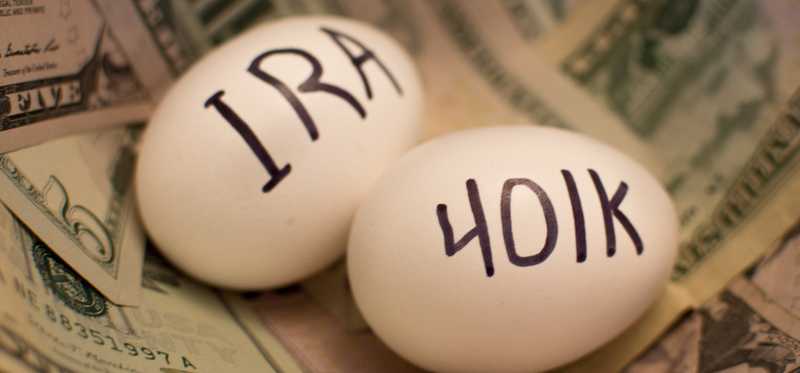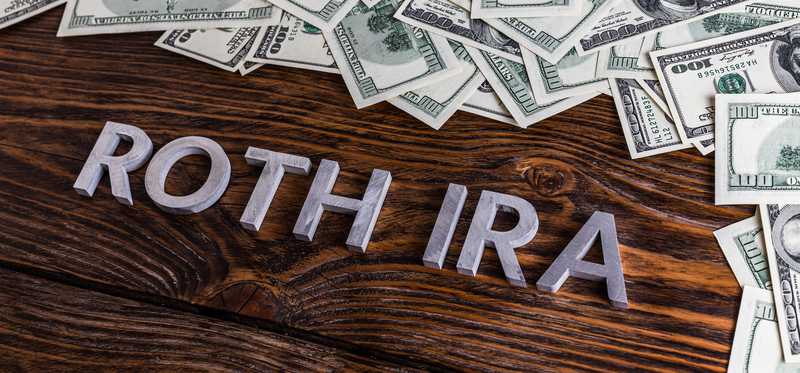10 Ways to Save for Retirement if You're Self-Employed

10 Ways to Save for Retirement if You're Self-Employed
Self-employed workers need to set themselves up for a secure retirement
For many workers, investing for retirement is pretty easy. If you work in a traditional job, your employer may offer a 401(k). You can sign up to contribute to it and then have pre-tax contributions taken directly from your paycheck. Your employer may even match some of the money you're putting in.
Self-employed individuals can't rely on an employer to help with this process. But the good news is, if you work for yourself, you may be able to take advantage of many different kinds of retirement savings accounts that provide generous tax breaks and make it easy to save for the future.
Here are 10 possible accounts you could use to save for your retirement and build the nest egg you need to be secure in your later years -- even if you're self-employed or own your own business.
5 Winning Stocks Under $49
We hear it over and over from investors, “I wish I had bought Amazon or Netflix when they were first recommended by the Motley Fool. I’d be sitting on a gold mine!” And it’s true. And while Amazon and Netflix have had a good run, we think these 5 other stocks are screaming buys. And you can buy them now for less than $49 a share! Simply click here to learn how to get your copy of “5 Growth Stocks Under $49” for FREE for a limited time only.
Previous
Next

1. Traditional IRA
A traditional IRA is an account that almost anyone can use to save for retirement, regardless of whether they are self-employed or not.
Traditional IRAs can be opened by individuals, and a wide variety of brokerage firms and other financial institutions offer them. Contributions are tax-deductible in the year they are made. However, there is an income limit for deductible contributions if either you or your spouse has access to a workplace retirement plan.
The downside of traditional IRAs is that the contribution limits are relatively low -- but the upside is that they are very easy accounts to open and maintain.
Previous
Next

2. Roth IRA
A Roth IRA is similar in many ways to a traditional IRA. In fact, the contribution limit applicable to both accounts is an aggregate one, so for 2021, you could contribute $6,000 total across both accounts (or $7,000 if you're self-employed).
The big difference between a traditional and Roth IRA is that contributions to a Roth aren't deductible in the year you make them. Instead, you contribute with after-tax dollars but benefit from tax-free withdrawals in retirement.
Roth IRAs are subject to a strict limit on income, and people who make too much can't invest in them at all. Contribution limits are also lower than many of the other retirement accounts self-employed workers have access to.
Again, the big benefit is that Roth IRAs are very easy to open and contribute to, you can open them with many different financial institutions, and there's little to no paperwork you need to fill out to maintain one.
Previous
Next

3. SIMPLE IRA
A SIMPLE IRA is an option for self-employed workers, and business owners can offer them if they have fewer than 100 employees.
SIMPLE IRAs have a higher contribution limit than traditional or Roth IRAs, and the income restrictions that apply to traditional or Roth IRAs don't apply to them. Contributions can be deducted in the year they are made.
While there's a little more paperwork you have to do, the administrative burden is still very low with this type of account.
You can contribute to a SIMPLE IRA both as an employee or as an employer. If you have other people working for your business, you may be required to make matching contributions to their accounts once you set up this plan and start investing in it.
Previous
Next

4. SEP-IRA
A SEP-IRA has a very high contribution limit and a low administrative burden. Both self-employed individuals and business owners can open one.
Like SIMPLE-IRAs, SEP-IRAs aren't subject to income limits, and contributions are tax-deductible in the year they are made. It's possible to open SEP-IRAs with many different brokerage firms and financial institutions. And the paperwork and administrative burdens aren't cumbersome.
You are required to make contributions for all employees at the same fixed percentage of employer pay, though. So if you have people working for you, you need to be aware of this.
Previous
Next

5. Solo 401(k)
A solo 401(k) is an option for self-employed workers who have no employees other than their spouse. They are very similar to the 401(k) accounts offered by traditional businesses, and they have high contribution limits.
When you use a solo 401(k), you can choose whether you want a traditional or a Roth 401(k). This means you have the option for contributions to be deductible in the year they are made, or for withdrawals to be made tax-free.
There are no income limits on who can contribute, and many brokerage firms offer solo 401(k)s, although it's common for them to charge a fee. Unfortunately, the administrative burden associated with this type of account can be substantial compared with SIMPLE, SEP, Roth, and traditional IRAs.
5 Winning Stocks Under $49
We hear it over and over from investors, “I wish I had bought Amazon or Netflix when they were first recommended by the Motley Fool. I’d be sitting on a gold mine!” And it’s true. And while Amazon and Netflix have had a good run, we think these 5 other stocks are screaming buys. And you can buy them now for less than $49 a share! Simply click here to learn how to get your copy of “5 Growth Stocks Under $49” for FREE for a limited time only.
Previous
Next

6. Health savings account
A health savings account is available if you have a qualifying high-deductible healthcare plan.
HSAs can be used to cover the costs of immediate healthcare needs, but they can also be a great retirement savings plan. You can contribute to them with pre-tax funds, your money can be invested and grow tax free, and you can withdraw money from your HSA without owing taxes on it if you use it for qualifying medical expenses.
An HSA can help you save for the cost of healthcare in retirement, which can be substantial. But you're also allowed to make withdrawals for any reason after age 65 and just pay taxes at your ordinary rate without owing penalties. That means they can be a good option for general retirement savings as well.
ALSO READ: What Will Healthcare Cost You in Retirement? Prepare to Be Shocked
Previous
Next

7. Profit-sharing plans
Business owners can create profit-sharing plans to share a portion of company profits with their workers. You can use a profit-sharing plan along with other retirement accounts and can choose whether to share profits based on quarterly or annual earnings.
You contribute to profit-sharing plans only as an employer, and the contribution limits are very high. You'll have discretion over whether to contribute to employee profit-sharing plans if you have people working for you, but can't discriminate in favor of highly compensated workers.
There's a high administrative burden to setting up a profit-sharing plan, with lots of paperwork to complete and requirements to fulfill.
Previous
Next

8. Money purchase plans
Business owners can establish money purchase plans and set contribution rates. There are high contribution limits, and employers are required to make contributions based on the formula they established.
The specific amount employers contribute isn't based on company profits and doesn't vary from year to year. While these plans allow you to set aside a lot of money for yourself and other employees, the administrative burden and paperwork requirements can be extensive.
However, there are preapproved plans you can use to make things easier.
Previous
Next

9. Defined benefit plans
As an employer, you may have the option to set up a defined benefit plan. This is different from a defined contribution plan, because you can essentially set up a plan that provides you with a guaranteed amount of income in retirement.
Businesses of any size are allowed to set up defined benefit plans, and they can be offered in conjunction with other retirement plans. Employers typically make contributions, and they are not permitted to retroactively decrease benefits.
Defined benefit plans have very high contribution limits, but the administrative burden and paperwork requirements are extremely complex and the plans can be very costly to administer.
ALSO READ: How to Work for Yourself: A Practical Guide (2021)
Previous
Next

10. Taxable brokerage account
Finally, you also have the option to save for retirement in a regular taxable brokerage account.
You can open this type of account with any broker or financial institution, invest in anything you like, and take the money out of your account anytime you want (unlike with most other retirement accounts, which come with restrictions on penalty-free withdrawals).
The obvious downside of this approach is that you don't get any tax benefits associated with contributions or withdrawals and you can't defer taxes on gains. But the upside is there's no extra paperwork required and far fewer restrictions on your account.
5 Winning Stocks Under $49
We hear it over and over from investors, “I wish I had bought Amazon or Netflix when they were first recommended by the Motley Fool. I’d be sitting on a gold mine!” And it’s true. And while Amazon and Netflix have had a good run, we think these 5 other stocks are screaming buys. And you can buy them now for less than $49 a share! Simply click here to learn how to get your copy of “5 Growth Stocks Under $49” for FREE for a limited time only.
Previous
Next

What type of account is right for you?
The right type of self-employed retirement account will vary depending on how your business is organized, whether you have people working for you, how much you want to contribute to your account, and what level of administrative work you're willing to take on.
The good news is that you have lots of options, so there's no reason not to start saving for a secure retirement today.
The Motley Fool has a disclosure policy.
Previous
Next
Invest Smarter with The Motley Fool
Join Over Half a Million Premium Members Receiving…
- New Stock Picks Each Month
- Detailed Analysis of Companies
- Model Portfolios
- Live Streaming During Market Hours
- And Much More
READ MORE
HOW THE MOTLEY FOOL CAN HELP YOU
-
Premium Investing Guidance
Market beating stocks from our award-winning service
-
The Daily Upside Newsletter
Investment news and high-quality insights delivered straight to your inbox
-
Get Started Investing
You can do it. Successful investing in just a few steps
-
Win at Retirement
Secrets and strategies for the post-work life you want.
-
Find a Broker
Find the right brokerage account for you.
-
Listen to our Podcasts
Hear our experts take on stocks, the market, and how to invest.
Premium Investing Services
Invest better with The Motley Fool. Get stock recommendations, portfolio guidance, and more from The Motley Fool's premium services.